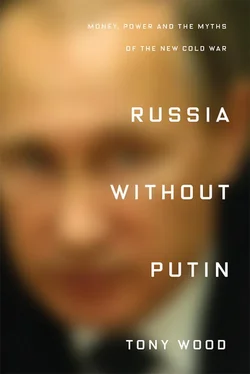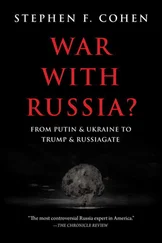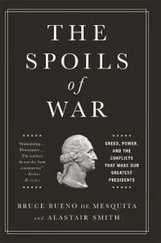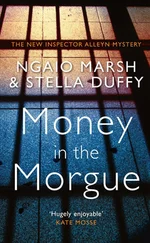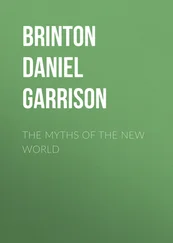Privatization took three forms, each of which benefited different segments of the nascent economic elite. {10} 10 A lucid account of the privatization process is in Barnes, Owning Russia , ch. 4.
The first was a ‘mass privatization’ scheme, launched with great fanfare in October 1992, in which citizens were issued with vouchers entitling them to buy shares in enterprises slated for privatization. By June 1994, some 15,000 enterprises, employing 17 million people – around two-thirds of the industrial workforce – had been auctioned off. {11} 11 Barnes, Owning Russia , pp. 75–76, Tables 4.1 and 4.2.
Nominally intended to create a kind of ‘popular capitalism’, in practice this produced a concentration of ownership and control among well-placed insiders from the nomenklatura and Soviet managerial elite. Managers often gained control of their workers’ shares, either by purchasing them or through more underhand means. And because voucher privatization took place in the middle of a catastrophic downturn, many workers sold their vouchers at a fraction of their face value to get hold of desperately needed cash. There was also a rash of speculation: by mid-1994, ‘voucher funds’ had hoovered up almost a third of all the vouchers in the country. {12} 12 Barnes, Owning Russia , p. 77.
The crisis conditions had another crucial effect: the assessed value of state enterprises was not indexed to inflation, so the real cost of acquiring them was plummeting by the day. The result was a fire sale of the Soviet economic apparatus. The voucher-auction price of shares in Gazprom, the Soviet gas monopoly, implied the company’s total value was $228 million – about one-thousandth of the estimation made by Western investment banks at the time. All told, the total value of Russian industry, according to voucher auction prices, was a mere $12 billion. As the Washington Post’s former Moscow bureau chief David Hoffman put it, this meant that ‘the equity of all Russian factories, including oil, gas, some transportation, and most of manufacturing, was worth less than that of Kellogg or Anheuser-Busch’. {13} 13 Figures from Hoffman, The Oligarchs , p. 205.
The second main form privatization took was even less transparent, involved much larger sums of money, and transferred far more significant assets out of state hands. Starting in mid-1992, Yeltsin effectively created a pool of magnates by state fiat, through a process of ‘privatization by decree’ that kept transactions free from democratic scrutiny. This involved, in particular, the enormous assets of the natural resource sector – oil and gas, coal, diamonds, gold, and so on. The new owners were initially drawn mostly from among the ‘red directors’ who had managed these concerns under Soviet rule. Among the enterprises sold off or turned into joint-stock companies by executive order were Gazprom; Rosugol, the state coal concern; Alrosa, a diamond company; and, crucially, three giant oil companies – Yukos, Lukoil, and Surgutneftegaz. {14} 14 For a detailed account of the struggles for ownership and control in the oil industry, see Gustafson’s Wheel of Fortune .
Again, the prices these assets fetched were light-years from any market valuation; the Yeltsin government’s eagerness to shift chunks of the economy into private hands took precedence over rational economic calculations.
A third form of privatization involved not state assets but budgetary flows. After 1991, Komsomol entrepreneurs such as Khodorkovsky and canny operators like Berezovsky or Smolensky acquired formidable power and wealth by acting as ‘authorized’ intermediaries for a range of government bodies. Funds for many of the ministries were not handled by the central bank, but instead routed through accounts in various privately owned ‘plenipotentiary’ banks. Like the winners of the voucher auctions and the magnates designated by decree, the new financial tycoons were effectively subsidized by the state. They even admitted as much: Khodorkovsky confessed to one interviewer that his Menatep Bank was deliberately organized to mirror the structure of the government, the better to maintain its grasp on federal revenues. As another banker, Pyotr Aven, observed:
To become a millionaire in our country, it is not at all necessary to have a good head or specialized knowledge. Often it is enough to have active support in the government, the parliament, local power structures and law enforcement agencies. One fine day, your insignificant bank is authorized to, for instance, conduct operations with budgetary funds. Or quotas are generously allotted for the export of oil, timber and gas. In other words, you are appointed a millionaire. {15} 15 Aven quoted in Peter Reddaway and Dmitri Glinski, The Tragedy of Russia’s Reforms: Market Bolshevism against Democracy , Washington, DC 2001, p. 603; Khodorkovsky in Hoffman, The Oligarchs , p. 232.
Similar processes were taking place at the regional level, though the pace and scale varied. In Moscow, Mayor Yuri Luzhkov governed in the manner of an old-school Party boss from 1992 to 2010. Instead of selling off their massive portfolio of properties, the municipal authorities kept hold of them, and retained a far greater degree of financial autonomy than any other Russian region. Here private fortunes were made mainly through lucrative city contracts secured thanks to connections with the mayor’s office, notably in construction – Luzhkov’s wife, Elena Baturina, head of the building firm Inteko, was coincidentally among the tiny number of women to join the hyper-rich.
Across the other eighty-odd federal components of Russia, the picture was complicated: while some local elites enthusiastically embraced free-market reforms, others created personal fiefdoms, sometimes on a clan or ethnic basis. But overall, the peripheries echoed what was happening in the Kremlin: in one region after another, the governor served as ‘midwife to the creation of financial-industrial groups’ – as political scientist Thomas Remington described it – forming a local elite by means of privatization. {16} 16 Thomas Remington, The Politics of Inequality in Russia , Cambridge 2011, p. 107.
Who were the men – and they were almost without exception men – who made up Russia’s new elite in the 1990s? In an impressive 2009 statistical study, economist Serguey Braguinsky profiled nearly 300 of its members. {17} 17 Serguey Braguinsky, ‘Postcommunist Oligarchs in Russia: Quantitative Analysis’, Journal of Law and Economics , vol. 52, May 2009, pp. 307–349. I thank the author for his generosity in sharing the data on which he based his analysis; the political conclusions I draw from it are entirely my own.
He divided them into two categories that to some extent reflected the pools from which the embryonic elite of the late 1980s was drawn – the canny operators versus the apparatchiks . Almost half of Braguinsky’s sample – 45 per cent – were what he called ‘insiders’: managers of Soviet enterprises prior to 1991, members of the nomenklatura , and relatives or close colleagues of people in the first two groups. The slight majority, by contrast, were classed as ‘outsiders’, with no visibly important ties to the previous system. The people in these two categories had quite different demographic and social profiles. The majority of ‘insiders’ were from the provinces (66 per cent), and overwhelmingly Slavic in origin (85 per cent); by contrast, two-fifths of ‘outsiders’ were born in Moscow, and a quarter were Jewish. [1] In Russia, Jewishness is generally held to be an ethnic category, and is often registered in official census data along with other narodnosti – ‘nationalities’ – such as Tatars, Chechens, Buryats, and so on. The share of the Russian population identifying as Jews in 2002, in the first post-Soviet census, was 0.16 per cent.
(Part of the reason for this disproportion is that in the late Soviet period Jews had faced a good deal of discrimination, and were hence much less likely to be appointed to ‘insider’ managerial posts.)
Читать дальше
